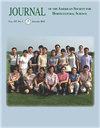Genetic Diversity and Population Structure Analysis of Wild Cymbidium tortisepalum Based on Chloroplast DNA in Yunnan Province of China
IF 1.1
4区 农林科学
Q3 HORTICULTURE
Journal of the American Society for Horticultural Science
Pub Date : 2021-09-30
DOI:10.21273/jashs05046-21
引用次数: 0
Abstract
Cymbidium tortisepalum is a primary orchid species in Yunnan Province, China, and has an extremely high ornamental and economic value. To reveal the levels and distribution of genetic variation and structure of wild C. tortisepalum resources, sequence variations of six chloroplast DNA intergenic spacers (psbM-trnD, trnV-trnA, accD-psal, rrn23, trnk-rps16, and ycf1) were analyzed in 404 wild individuals from 28 populations in the three river area in Yunnan Province, China. The results showed that the six chloroplast DNA sequences were aligned with 61 polymorphic sites, including 50 indels and 11 haplotypes in 404 individuals, which revealed a low level of genetic diversity (total genetic diversity = 0.240, and the average value of nucleotide diversity = 0.00024). In addition, a fairly low genetic differentiation [coefficients for genetic differentiation among populations (GST) = 0.099, number of substitution (NST) = 0.081] was found among the studied populations, and NST value was less than GST, which indicated that no significant phylogeographic structure existed in those populations. Furthermore, analysis of molecular variance revealed that great genetic variance (91%) came from individuals within the populations, which indicated that there was no clear genetic differentiation among populations. On the basis of these findings, a conservation plan was proposed to sample or preserve fewer populations but with more individuals from each population.基于叶绿体DNA的云南野生大花蕙兰遗传多样性及群体结构分析
春兰(Cymbidium tortisepalum)是中国云南省的一种原生兰花,具有极高的观赏价值和经济价值。为了揭示野生金龟草资源的遗传变异水平、分布和结构,对云南三江地区28个居群404个野生个体的6个叶绿体DNA基因间间隔序列(psbM-trnD、trnV-trnA、accD-psal、rrn23、trnk-rps16和ycf1)进行了分析。结果表明,6条叶绿体DNA序列在404个个体中有61个多态性位点,包括50个索引和11个单倍型,遗传多样性水平较低(总遗传多样性= 0.240,核苷酸多样性平均值= 0.00024)。种群间遗传分化系数(coefficient for genetic differentiation, GST) = 0.099,代入数(number of substitution, NST) = 0.081,且NST值小于GST,表明种群间不存在显著的系统地理结构。分子变异分析表明,居群内个体的遗传变异较大(91%),表明居群间不存在明显的遗传分化。在这些发现的基础上,提出了一项保护计划,即取样或保护更少的种群,但每个种群中有更多的个体。
本文章由计算机程序翻译,如有差异,请以英文原文为准。
求助全文
约1分钟内获得全文
求助全文
来源期刊
CiteScore
3.80
自引率
0.00%
发文量
31
审稿时长
2 months
期刊介绍:
The Journal of the American Society for Horticultural Science publishes papers on the results of original research on horticultural plants and their products or directly related research areas. Its prime function is to communicate mission-oriented, fundamental research to other researchers.
The journal includes detailed reports of original research results on various aspects of horticultural science and directly related subjects such as:
- Biotechnology
- Developmental Physiology
- Environmental Stress Physiology
- Genetics and Breeding
- Photosynthesis, Sources-Sink Physiology
- Postharvest Biology
- Seed Physiology
- Postharvest Biology
- Seed Physiology
- Soil-Plant-Water Relationships
- Statistics

 求助内容:
求助内容: 应助结果提醒方式:
应助结果提醒方式:


